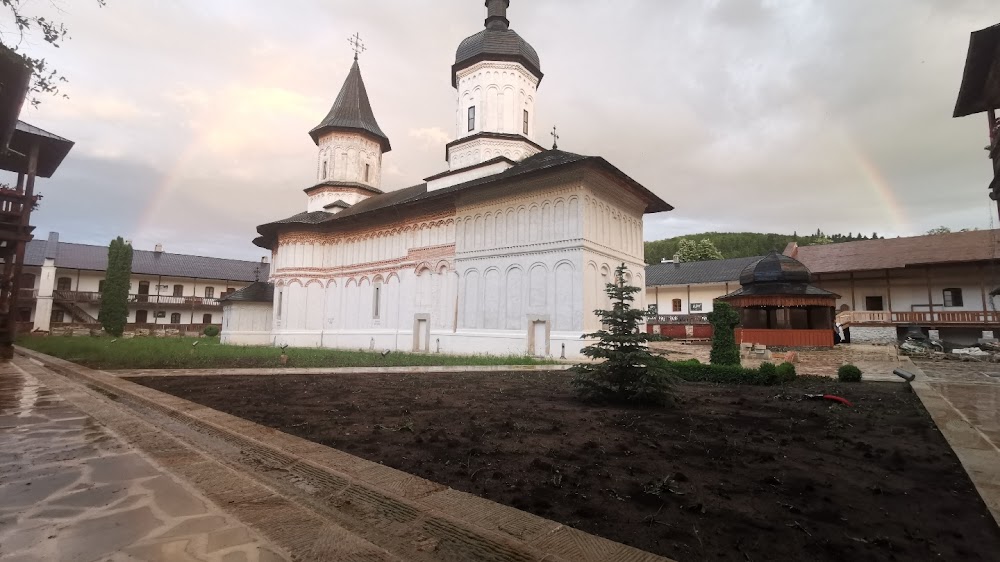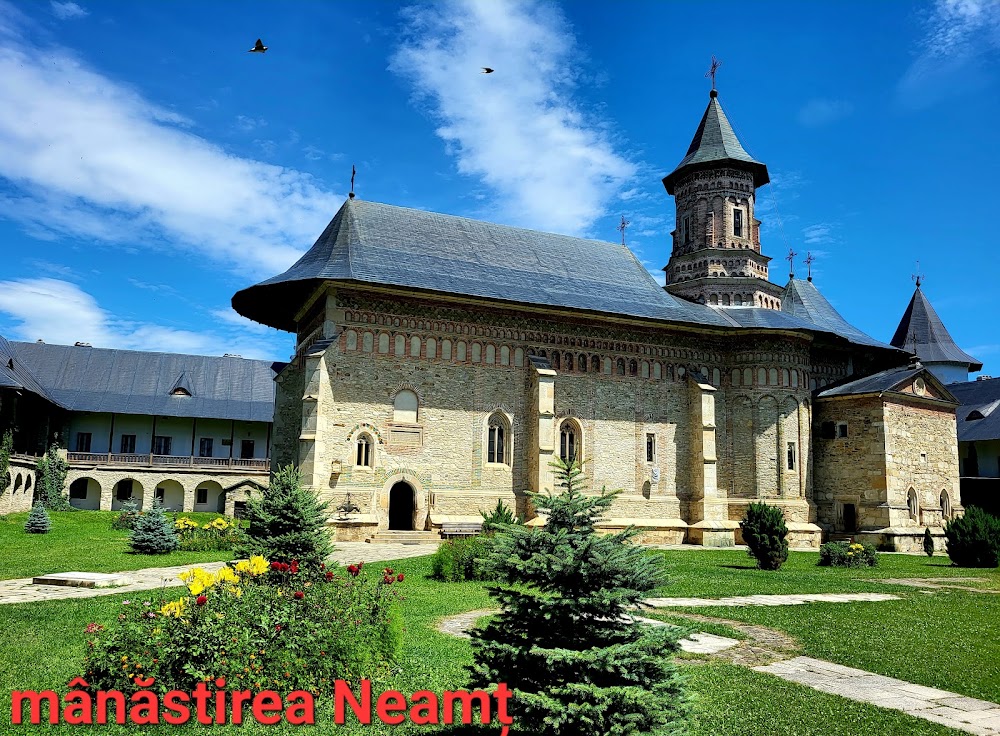Agapia Monastery (Mănăstirea Agapia)
Overview
Agapia Monastery, nestled in the stunning landscape of Neamț County, Romania, is a revered site that encapsulates centuries of rich cultural and religious heritage. The origins of this sacred sanctuary date back to 1642, during the reign of Prince Vasile Lupu, with its construction officially completed in 1644. Designed as a spiritual haven, Agapia quickly emerged as one of the most significant monastic establishments in the region.
Architectural Significance
The design of Agapia Monastery showcases the traditional Moldavian architectural style, a testament to the era’s artistic craftsmanship. Prince Vasile Lupu's wife played a crucial role in its establishment, contributing significantly to its elaborate artisanship. The complex comprises several buildings, most notably the main church, known as the Church of the Holy Archangels Michael and Gabriel, which is celebrated for its grandeur and intricate details.
Artistic Treasures
At the heart of the monastery lies the church, constructed from stone and brick, adorned with beautiful frescoes and religious art. One of the most prominent artists involved in this artistic endeavor was Nicolae Grigorescu, who, in the mid-19th century, was commissioned to decorate the interior. His unique blend of traditional Christian iconography combined with a fresh perspective fills the space with a sense of profound spirituality and aesthetic harmony.
Purposeful Design
The monastery's layout was thoughtfully designed to foster contemplation and spiritual practice. The residential quarters, while simple, are functional and cater to the daily lives of the nuns who reside there. Over the years, the monastery has undergone various expansions and renovations, preserving its historical essence while adapting to modern needs.
A Living Community
Today, Agapia Monastery is not just an architectural marvel; it remains an active religious community, home to approximately 300 nuns. These dedicated women devote their lives to prayer, religious duties, and various forms of work that sustain the monastery. Their skills in weaving, embroidery, icon painting, and agriculture contribute to the monastery's self-sufficiency, ensuring that it thrives as a spiritual haven.
Tourist Attraction
The monastery complex attracts visitors from Romania and beyond, drawn by its serene environment, historical significance, and impressive artistic offerings. The well-maintained gardens and surrounding landscapes enhance the tranquility, making it an ideal spot for reflection and exploration.
Resilience Through Adversity
Throughout its history, Agapia Monastery has faced numerous challenges, including political upheaval and two significant fires in the 19th century. However, the resilience of its community has ensured its restoration and preservation. Today, the monastery stands as a testament to the enduring faith and commitment of its residents.
Preservation Efforts
In recent years, ongoing preservation efforts have further solidified Agapia Monastery's historical and spiritual significance. Careful restoration of frescoes and structural renovations have been undertaken to protect the buildings from wear and tear, ensuring that this sacred site remains a cherished part of Romania’s heritage.
Agapia Monastery, with its rich history and artistic treasures, continues to play a vital role as a spiritual center. It is a place where the past and present coexist harmoniously, offering visitors a glimpse into Romania’s deep religious traditions and cultural identity. Whether you're seeking spiritual solace or an appreciation for history and art, Agapia Monastery promises an enriching experience.







